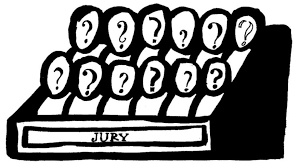The peremptory challenge − the unfettered ability of lawyers to exclude a limited number of otherwise qualified jurors from serving − has come under intense scrutiny over the last 35 years.

In 1986, the U.S. Supreme Court placed peremptory challenges under the control of its Equal Protection Clause in the famous Batson v Kentucky case. In 1988, they were abolished in England. In 1991, the Aboriginal Justice Inquiry (Manitoba) recommended that they be abolished in Canada. Other jurisdictions, including in Australia, have reduced the number. In New Zealand, lawyers only have four challenges. In Tasmania, six challenges are available but only to the accused.
This is a wealth of experiences, perspectives and research that the federal government could rely on in deciding what path to chart for Canada. It used Bill C-75 to abolish peremptory challenges. The reaction has largely focused on the impact of abolition on jury representativeness and the ability of the defence to remove a juror where there is lingering concern about bias or disinterest.
However, as Professor Kent Roach has observed, the peremptory challenge is a poor tool to address these important concerns. Bill C-75 has increased a trial judge’s jurisdiction during jury selection. This is a good first step. Removing many of the barriers to eligibility, incentivizing service and expanding the process we use to screen jurors for bias (known as challenges for cause) will more effectively enhance representativeness, impartiality and confidence in the process. There is much more work here for the government to do.
The real issue is that peremptory challenges are an open invitation for discrimination.
The Aboriginal Justice Inquiry found that “it is common practice for some Crown attorneys and defence counsel to exclude Aboriginal jurors” and expressed grave concern for a “system that permits Aboriginal people to be so often and so easily excluded from sitting on a jury.” We saw this in the Gerald Stanley case.
In the United States, there is a long history of peremptory challenges being used by the prosecution to exclude black jurors. In 2012, a Michigan State study revealed that over a 20-year period in North Carolina, prosecutors in death-penalty cases struck black jurors at a rate of 2.5 times the rate for non-black jurors.
What is often overlooked in the discussion in Canada is the impact of discriminatory challenges on the excluded juror. We tell citizens that it is their civic duty to serve on the jury. We make it an offence to ignore a jury summons, something we do not do with any other aspect of democratic participation.
The right of citizens to sit on a jury and act as the conscience of the community in a process of collective fact-finding has been recognized by the Supreme Court of Canada and a number of provincial Jury Acts.
Denying an individual a fundamental democratic right on the basis of race or other prohibited ground creates a profound harm to them, the community and the administration of justice. It is certainly not going to engender trust in excluded communities and increase their willingness to participate in the criminal justice system.
In JEB v Alabama, the U.S. Supreme Court recognized that a discriminatory challenge “reinvokes a history of exclusion from political participation” and sends the “message” that certain individuals are presumptively “unqualified” to participate. Indeed, the unstated and troubling assumption in many of the cases is that a black or Indigenous juror is incapable of being impartial in an interracial case as compared to a white juror.
The harm is compounded by the lack of any meaningful redress, as our courts have held that an accused does not have standing to vindicate an excluded juror’s equality rights.
Is repeal the only solution? The only other viable option is the Batson regime which attempts to control discriminatory use. This is a time-consuming and challenging three-step process requiring evidence, rebuttal and a judicial determination of purpose. It would appear that the general consensus from judges and academics in the United States is that the Batson process has failed miserably.
That is precisely why Justice Thurgood Marshall predicted in Batson that “only by banning peremptories entirely can such discrimination be ended.”
David Tanovich
Globe and Mail
Apr 9, 2018
Hi! I am a robot. I just upvoted you! I found similar content that readers might be interested in:
https://www.theglobeandmail.com/opinion/article-we-must-end-discrimination-in-jury-selection/